The Design Symphony: Weaving Bold Patterns and Personal Narratives in Architectural Harmony
- Ishita Shreekant
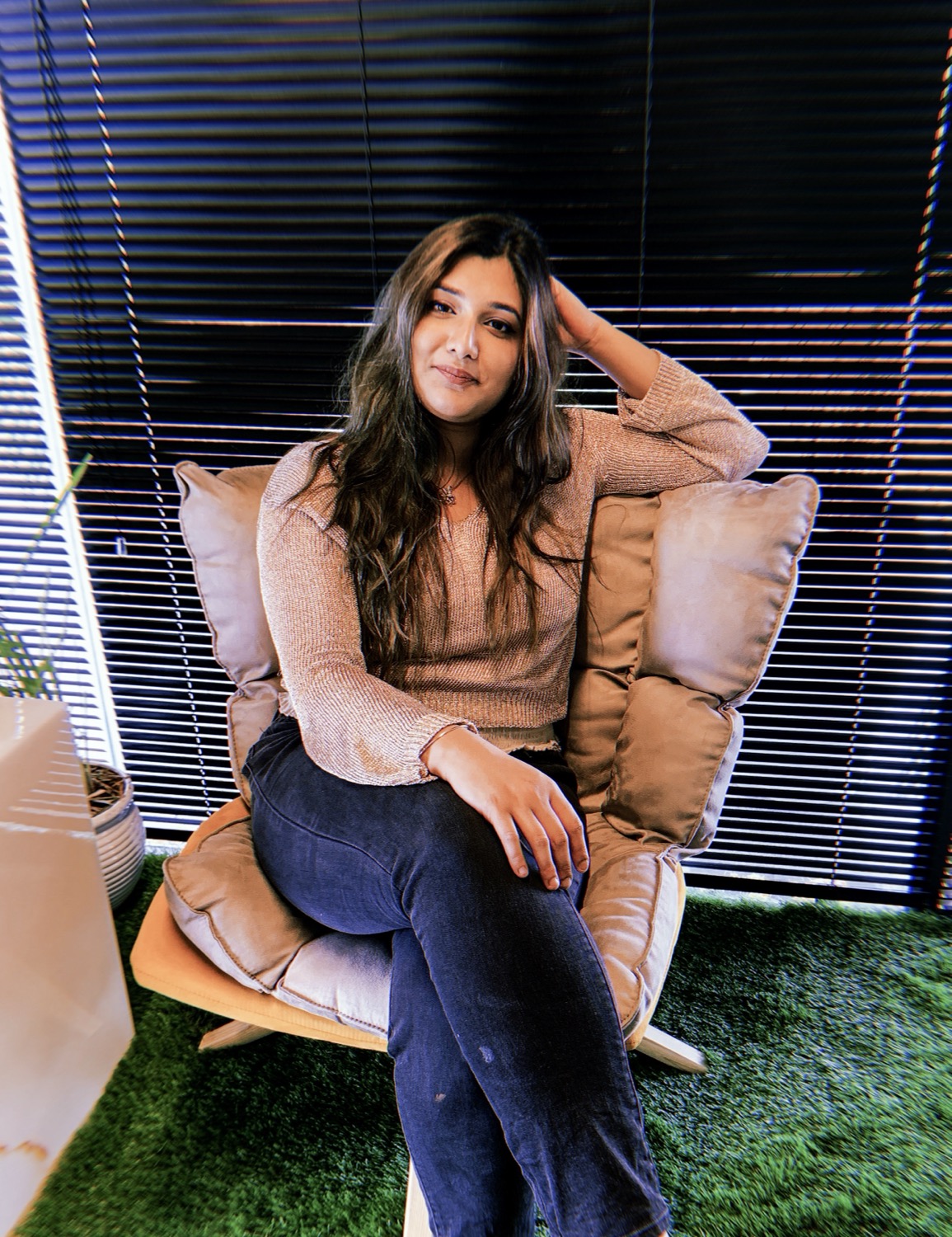
- Jan 28, 2024
- 16 min read
Unleashing the Power of Bold Patterns in Interior Design
In the realm of interior design, the captivating and dynamic use of bold patterns is akin to infusing a space with a burst of personality, turning mundane rooms into visually stunning compositions. These bold patterns serve as the vibrant threads that weave a narrative within the walls of our homes. From lively geometric prints that evoke a sense of order and playfulness to daring florals that whisper tales of nature's beauty, the language of patterns becomes a medium through which homeowners can articulate their unique style.
Why Bold Patterns?
1. Visual Impact The power of bold patterns lies in their innate ability to command attention, instantly becoming the focal point of any room. This visual impact transcends mere aesthetics; it is a bold proclamation of individuality within the spaces we inhabit.
"In a world saturated with neutrals, bold patterns are your design rebellion, your chance to stand out and make a statement." – Jane Doe, Interior Designer
2. Expressive Personality Bold patterns are more than design elements; they are a powerful form of self-expression, reflecting not only aesthetic preferences but the very essence of individual tastes and personality.
"Your home should do more than just shelter you; it should tell the story of who you are, a curated collection of what you love and find beautiful." – Nate Berkus, Interior Designer
Tips for Incorporating Bold Patterns
1. Mix with Neutrals
The harmonious marriage of bold patterns with neutral colours is a design strategy that elevates a space, creating a balanced and visually pleasing environment. This juxtaposition allows each pattern to shine against a backdrop of understated elegance.
2. Scale it Right
The art of scaling patterns becomes a design play where different-sized patterns coexist, creating an engaging visual contrast. Mixing large-scale patterns with smaller ones adds depth, creating a lively atmosphere within the room.
"Scale is not just about size; it's about the energy a room exudes. Embrace variety in pattern scale for a space that feels dynamic and alive." – Bobby Berk, Interior Designer
3. Accent Furniture
Furniture goes beyond functionality; it becomes a statement piece, anchoring the room and setting the tone for the overall design. It is an opportunity to infuse personality and character into the very fabric of the living space.
4. Layer with Textiles
The art of layering with boldly patterned textiles, from rugs to cushions, is akin to creating a visual symphony in the home. These layers add depth and evoke a sense of warmth and coziness.
"Textiles are the storytellers in a room, and boldly patterned ones add chapters of interest, making your space a haven of visual delight." – Jonathan Adler, Designer
5. Unexpected Spaces
Bold patterns need not be confined to the expected; instead, consider applying them to unexpected areas, such as ceilings or the inside of bookshelves. This touch of surprise keeps the design interesting and fosters a sense of curiosity.
Unconventional placements of patterns inject an element of surprise, turning the ordinary into the extraordinary and making your space truly memorable.
Bold patterns, in their myriad forms, serve as more than design choices; they become a narrative, an art form through which homeowners can tell their stories.
In the next segment, we'll explore more design tips, dive into the three most popular design styles that incorporate bold patterns, and learn about the psychological significance of incorporating bold patterns into interior spaces.
Stay tuned for a journey into the world of maximalism, tribal influences, and timeless geometric patterns.
1. Maximalism
Maximalist interior design is characterized by an abundance of bold patterns, colours, and textures. It thrives on the philosophy of "more is more," creating visually rich and eclectic spaces.
Distinct Elements:
- Vibrant Colors: Maximalist spaces often feature a diverse and vibrant colour palette, ranging from jewel tones to bold primaries.
- Eclectic Furnishings: Mix and match furniture styles, incorporating a variety of textures and finishes for a dynamic and personalized look.
- Layered Textiles: Maximalism embraces the layering of bold-patterned textiles such as rugs, throws, and cushions to create a sumptuous and inviting atmosphere.
2. Bohemian (Boho) Style
Bohemian interior design is a free-spirited style that integrates bold patterns, global influences, and a laid-back, casual vibe. It celebrates individuality and creativity.
Distinct Elements:
- Eclectic Patterns: Boho spaces feature a mix of bold and often mismatched patterns, from paisleys and florals to ethnic prints.
- Natural Elements: Incorporate bold patterns alongside natural materials like rattan, jute, and woven textiles for an earthy and relaxed feel.
- Cultural Artifacts: Bohemian design often showcases artifacts and items collected from various cultures, contributing to the eclectic and globally inspired aesthetic.
3. Art Deco
Art Deco interior design emerged in the early 20th century, characterized by opulence, geometric patterns, and luxurious materials. It exudes glamour and sophistication.
Distinct Elements:
- Geometric Patterns: Bold and symmetrical geometric patterns, such as chevrons, zigzags, and sunbursts, are signature elements of Art Deco.
- Luxe Materials: Art Deco embraces the use of luxurious materials like marble, mirrored surfaces, and lacquered finishes for a glamorous touch.
- Bold Colour Palette: While not excessively colourful, Art Deco interiors often feature bold accents in rich jewel tones like emerald green, sapphire blue, and deep red.
These popular interior design styles showcase the versatility of incorporating bold patterns, each offering a unique approach to self-expression and visual dynamism within the home. Whether you prefer the lavish maximalism, the laid-back boho vibe, or the glamorous sophistication of Art Deco, bold patterns play a pivotal role in defining these captivating design aesthetics.
Crafting Spaces of Self: The Art of Interior Design as Self-Expression
As we delve deeper into the vibrant dance of bold patterns, it becomes evident that our homes are not mere spaces; they are canvases waiting to be painted with the hues of our personality. The deliberate choice of bold patterns transcends the selection of mere aesthetics; it is a proclamation, an expression of who we are, and what resonates with our souls.
Patterns as Personal Signatures:
1. Fingerprint of Style
Just as no two fingerprints are alike, the use of bold patterns becomes a unique signature of personal style within our living spaces. Whether it's the daring geometry of chevrons or the whimsical charm of florals, each pattern is a brushstroke on the canvas of our homes, reflecting the uniqueness of the dweller.
It is interesting to note how specific patterns resonate with individual tastes. For instance, geometric patterns may symbolize a preference for order and structure, while organic and free-flowing florals might echo a love for nature and a more carefree spirit. Thus, the choice of pattern becomes a form of non-verbal communication, a silent conversation between the inhabitant and their surroundings.
2. Cultural Narratives
Bold patterns often carry with them cultural stories, acting as visual narratives that reflect our roots and personal connections. Incorporating patterns inspired by our heritage becomes a visual celebration of our cultural identity, turning our living spaces into storytellers that unfold tales of ancestry and tradition.
There is a rich tapestry of cultural patterns, from intricate Islamic geometries to the vibrant hues of Mexican textiles. Each choice becomes not just an aesthetic decision but a deliberate embrace of cultural heritage, transforming the home into a dynamic gallery that honours the stories embedded in these patterns.
Emotional Harmony Through Design

1. Colour Psychology
The bold use of patterns involves a thoughtful exploration of colours, with each hue contributing to the emotional tapestry of the space. The psychology of colour comes into play as vibrant hues infuse energy, while muted tones create serene retreats. Our emotional palette is translated into the design, ensuring that our living spaces resonate with our desired moods. Warm tones like reds and yellows might evoke feelings of passion and energy, while cool blues and greens create a sense of calm. Understanding this interplay allows individuals to curate spaces that align with their emotional needs.
Stay tuned for a more elaborate blog on the Psychology of Colour.

2. A Sanctuary for the Soul In the hustle of daily life, our homes become sanctuaries where we seek refuge. Bold patterns, carefully chosen, contribute to a sense of comfort and well-being, creating an environment that nurtures our souls.
'Hygge' – the Danish philosophy of creating a cozy and comfortable atmosphere. How can bold patterns contribute to a sense of hygge in the home, fostering a feeling of warmth and contentment?
The Architect as a Co-Author
1. Interpreting Dreams:
Architects and designers step into the role of co-authors, deciphering the language of our dreams and desires. Through the lens of bold patterns, they craft spaces that align with our vision, turning our aspirations into tangible design elements.
In the intricate dance of design collaboration, effective communication serves as the linchpin, ensuring a harmonious translation of the homeowner's vision into tangible design choices. Architects and designers embark on a journey of understanding, engaging in open dialogues to unravel the layers of the client's preferences, lifestyle, and aspirations. Through in-depth discussions, design professionals glean valuable insights that guide them in selecting patterns that not only align with the client's aesthetic preferences but also resonate with the emotional tapestry they wish to weave into their living spaces. This collaborative exchange transforms the design process into a dynamic partnership, where the architect becomes not just a creator but a curator of the homeowner's unique narrative, bringing it to life through the carefully chosen bold patterns and thoughtful design elements.
2. Collaborative Journey: The process of designing a home is a collaborative journey, a dance between the dweller and the designer. Architects and designers become partners in self-expression, guiding us through the vast landscape of possibilities. Every decision, from the selection of patterns to the arrangement of furniture, contributes to the unfolding narrative of our lives.
Delving into real-life examples illuminates the transformative power of architectural collaboration. In the realm of design alchemy, architects and designers become adept storytellers, weaving the diverse narratives of homeowners into the very fabric of their spaces. Consider, for instance, a case where a couple's love for travel and cultural exploration became the driving force behind a home adorned with vibrant, globally-inspired patterns and artifacts. By adeptly integrating these elements, the designers not only captured the essence of the couple's journeys but also fashioned a sanctuary that mirrored their shared adventures. In another instance, a family's deep connection to nature served as the catalyst for a design that seamlessly incorporated organic patterns and natural materials. Through meticulous collaboration, the architects transformed the home into a harmonious extension of the surrounding landscape, creating a serene haven reflective of the family's commitment to sustainability and their love for the outdoors. These examples underscore the dynamic interplay between client narratives and design execution. Successful projects hinge on the ability of architects and designers to distil the essence of a homeowner's story and infuse it into the very structure of their living spaces. Through such personalized design journeys, bold patterns not only serve as aesthetic elements but also as conduits for the articulation of individual stories, making every residence a unique and cherished chapter in the book of design.
Bold Patterns as Architectural Elements
1. Elevating Spaces:
Bold patterns are not confined to the realm of furnishings; they become architectural elements that define the character of a space. From facades adorned with striking geometric patterns to interiors featuring daring tilework, architects use bold patterns to elevate the aesthetic appeal of their creations.
Showcasing examples of architectural projects provides a tangible glimpse into the seamless integration of bold patterns. Architects navigate the delicate balance between functionality and aesthetics, ensuring that bold patterns not only adorn but enhance the overall architectural experience. In a contemporary residential project, for instance, vibrant geometric patterns on accent walls not only infuse energy into the space but also cleverly define functional zones within an open floor plan. In commercial spaces, architects may strategically use bold patterns in flooring or ceiling designs to guide the flow of movement, marrying functionality with a visually arresting aesthetic. This delicate dance extends to public spaces, where the strategic application of bold patterns on surfaces like facades or entryways becomes a visual invitation, setting the tone for the architectural encounter. The integration of bold patterns goes beyond mere decoration; it becomes an architectural language that communicates the essence of a space. In a cultural centre, for example, architects may incorporate bold patterns inspired by local heritage, creating a sensory experience that resonates with visitors. The use of bold patterns in such projects extends beyond aesthetics, serving as a tool for cultural storytelling and community engagement. Functionality remains a cornerstone in these projects, with architects meticulously selecting materials and designs that not only captivate the eye but also serve practical purposes. From acoustically designed bold-patterned ceilings in auditoriums to strategically placed patterns guiding wayfinding in large complexes, architects orchestrate these elements to elevate both the visual and functional aspects of the architectural experience. These examples demonstrate that bold patterns, when thoughtfully integrated, become integral to the architectural narrative. Architects wield them not as mere embellishments but as powerful tools to enhance spatial functionality, communicate cultural narratives, and craft immersive environments that leave a lasting impression on those who engage with the built space.
2. Spatial Dynamics: The strategic use of bold patterns influences spatial dynamics, guiding the flow of movement and shaping the experience of the occupants. Architects consider not only the visual impact but also the way patterns interact with light, creating a multi-sensory experience.
Bold patterns in spatial design serve as strategic tools for architects to manipulate perceptions. By creating focal points through accent walls or statement ceilings, architects establish visual anchors, enriching the spatial experience. These patterns also guide the eye through spaces, establishing visual pathways and influencing movement. The scale and repetition of bold patterns play pivotal roles, visually expanding or contracting spaces and fostering rhythm for a cohesive journey. In essence, architects use bold patterns to orchestrate a dynamic and engaging spatial experience, transforming environments into captivating and harmonious canvases.
A Call to Action: Crafting Your Unique Space
As we navigate through the architectural tapestry woven with bold patterns, a call to action emerges. Every individual, homeowner, or aspiring dweller becomes the protagonist in their design story. Just as architects celebrate diversity through their creations, individuals are urged to embrace their uniqueness, allowing their stories to unfold within the walls they call home.
Architects offer not just designs but a pathway for individuals to craft their unique spaces. The call to action is an invitation for individuals to step into the role of co-creators, actively participating in the design dialogue with architects. It's a reminder that homes are not just shelters but canvases waiting for personal stories to be written upon them.

Crafting Homes: The Protagonist's Guide to Self-Expression
As we stand at the crossroads of architectural design and individuality, the spotlight shifts to the role of the dweller – the protagonist in the narrative of home design. Each individual becomes the chief storyteller, weaving their personal tales into the fabric of their living spaces. Let us embark on a journey where self-expression takes center stage, and homes become the canvas for the stories only we can tell.
Personalising Spaces
1. A Canvas of Possibilities:
Your home is not just a place; it's a canvas waiting for your stories to unfold. As the dweller, you hold the brush, and the choices you make – from furniture to colour palettes – become the strokes that shape your narrative.

Exploring the home as a personal canvas invites individuals to approach it with a creative mindset, turning seemingly mundane choices into powerful contributors to the overall narrative. Every decision, from the placement of a favorite artwork to the selection of a statement rug, becomes a brushstroke on this canvas, adding depth and meaning to the story being told within the walls.
Individuals can view their homes as dynamic expressions of their personalities, where each element serves a purpose beyond mere functionality. A strategically placed bold-patterned rug, for example, becomes more than a floor covering; it becomes a foundational piece that sets the tone for the entire room. Similarly, the positioning of cherished artwork transforms walls into galleries, creating focal points that draw attention and tell a visual story.
The creative mindset extends to the arrangement of furniture and the infusion of personal artifacts. By approaching these decisions with intentionality, individuals transform their living spaces into reflections of their journeys, passions, and unique identities. A well-curated bookshelf, for instance, becomes a snapshot of one's literary tastes and interests, contributing to the overall narrative of the home.
Seemingly small choices, when made with a creative perspective, carry significant weight in crafting a cohesive and personalized environment. Each element becomes a thread woven into the larger tapestry of the home's story. This approach encourages individuals to break free from design norms and embrace their unique style, transforming their living spaces into canvases that evolve with them, reflecting the chapters of their lives and the tales they wish to tell.
2. Beyond Trends:
Trends may come and go, but your personal style endures. The call to action is an encouragement to move beyond fleeting design trends and embrace elements that resonate with your tastes and preferences.
Delving into the impact of trends on design choices, individuals navigate a delicate balance between incorporating contemporary elements and staying true to their personal aesthetic. The ebb and flow of trends can be enticing, prompting individuals to experiment with the latest styles. Amidst this ever-changing landscape, bold patterns emerge as timeless elements that serve as a bridge between the contemporary and the enduring.
Trends often inspire design choices, influencing everything from color palettes to furniture styles. While it's exciting to embrace what's current, the challenge lies in ensuring that these trends seamlessly integrate with one's personal aesthetic. Bold patterns, with their enduring appeal, offer a solution. Their timeless nature allows individuals to infuse contemporary spaces with elements that stand the test of time.
Incorporating bold patterns becomes a strategic design move. Whether through accent walls, statement furniture, or vibrant textiles, these patterns anchor a space in the present while adding a touch of enduring charm. The key is to use bold patterns as focal points that capture attention and elevate the overall aesthetic without overshadowing personal style.
Bold patterns also provide a versatile canvas for expressing individuality within the realm of trends. Whether one's taste leans towards minimalist chic or maximalist vibrancy, bold patterns can be tailored to align with personal preferences. This adaptability allows individuals to experiment with trend-inspired elements while maintaining a cohesive and personalized interior.
Navigating the intersection of trends and personal aesthetic requires a discerning eye and a willingness to curate rather than conform. Bold patterns, acting as timeless design companions, empower individuals to curate spaces that not only align with contemporary influences but also embody enduring style. By strategically incorporating bold patterns, individuals strike a harmonious balance, creating interiors that resonate with the essence of the present while honoring the enduring elements that define their unique aesthetic journey.
Journey of Self-Discovery
1. Understanding Your Aesthetic Language: Embarking on a journey of self-expression begins with understanding your own aesthetic language. What patterns, colours, and styles resonate with you? This self-discovery becomes the compass guiding your design choices.
Below are some practical tips and tools to identify patterns, styles, and colour palettes that authentically align with your tastes:
Mood Boards and Visual Diaries: Create mood boards or visual diaries. Collect images, textures, and colors that evoke positive emotions or resonate with personal experiences. Over time, patterns emerge, revealing preferred styles and aesthetics.
Pinterest Exploration: Make use of platforms like Pinterest for a digital visual exploration. By curating boards with images that captivate, individuals can identify recurring themes, whether it's specific patterns, color schemes, or architectural styles.
Colour Personality Tests: Explore color personality tests, which can provide insights into preferred color palettes. These tests often link color preferences to personality traits, aiding in the discovery of colours that resonate on a personal level. (Link to some tried and tested quizzes are attached in the end.)
Home Walkthroughs: Take a walk through your own home with a fresh perspective. Identify favorite elements, whether it's a particular piece of furniture, artwork, or bold pattern. Understanding what already brings joy can guide further design decisions.
Artistic Expression: Tap into your artistic expression. Whether it's through painting, drawing, or even crafting, the act of creation often unveils subconscious preferences. Bold patterns or color choices in personal artwork can be indicative of individual style.
Design Personality Quizzes: Take design personality quizzes. Many online tools and magazines offer quizzes that help individuals identify their design preferences, whether they lean towards modern, eclectic, traditional, or other styles. (Link to some tried and tested quizzes are attached in the end.)
Spatial Awareness Exercises: Engage in spatial awareness exercises. Imagine your ideal space, considering factors like lighting, furniture placement, and patterns. These mental exercises can provide clarity on design preferences.
Trial and Error: Experiment with small design elements, such as throw pillows, rugs, or wall art. Observing reactions to these additions helps in deciphering what truly resonates.
By combining these practical tips, individuals embark on a self-discovery journey that goes beyond design trends, allowing them to uncover patterns, styles, and colour palettes that genuinely reflect their tastes and preferences.
2. Infusing Personal Narratives: Homes become more than just physical spaces when infused with personal narratives. The call to action is an invitation to incorporate elements that tell your story – from cherished mementos to bold patterns that reflect your character.
Delving into specific ways you can infuse personal narratives into your homes, involves creative strategies that transform spaces into compelling stories. Here are insights into how a well-placed bold-patterned accent piece and creative displays of personal artifacts become storytelling elements:
Bold-Patterned Accent Pieces
Focal Points and Conversation Starters: Use bold-patterned accent pieces strategically as focal points in a room. Whether it's a vibrant rug, patterned throw pillows, or an accent chair, these elements serve as conversation starters and visual anecdotes that draw attention.
Symbolism and Meaning: Select patterns that hold personal significance. Whether it's a pattern reminiscent of a cherished place, cultural heritage, or a defining life moment, the bold patterns become symbolic representations embedded with meaning.
Narrative Through Colour Explore the narrative potential of colour within bold patterns. Vivid hues can evoke specific emotions or memories, transforming a room into a canvas where each color tells a part of the individual's story.
Creative Displays of Personal Artefacts
Gallery Walls with a Twist: Create gallery walls by incorporating personal artefacts and artwork. This eclectic display becomes a dynamic visual journey, showcasing not only artistic pieces but also items with sentimental value.
Themed Displays: Explore themed displays that tell a cohesive story, like a collection of travel souvenirs, vintage cameras, or family heirlooms that can be artfully arranged to narrate a person's experiences and passions.
Functional Storytelling: Embrace the functionality of personal artefacts. Items like antique books, family recipes, or vintage cookware can be integrated into everyday spaces, transforming functional elements into storytelling pieces that unfold narratives in daily life.
Memory Corners: Create dedicated memory corners that house personal artefacts, each with its own story. Whether it's a shelf of nostalgic trinkets or a display cabinet of mementos, these corners become time capsules of personal history.
Interactive Design Elements
Incorporate Interactive Design Elements: Explore interactive design elements like, a bold-patterned wall decal or mural that can become a canvas for family & friends to leave messages or doodles, adding ongoing layers to the narrative.
Rotating Displays: Suggest rotating displays to keep the narrative dynamic. By periodically changing the arrangement of personal artefacts or introducing new elements, individuals can continuously refresh the visual story within their homes.
In weaving personal narratives through bold patterns and creative displays, you transform your living spaces into more than mere environments; they become visual autobiographies, capturing the essence of your unique journeys and stories.
Bold Patterns as Design Poetry
As we reach the crescendo of our exploration, the symphony of bold patterns, architectural design, and individual self-expression converges into a harmonious celebration of creativity and uniqueness. In this grand finale, we witness the magic that unfolds when dwellers embrace bold patterns, architects weave stories into structures, and homes become living canvases of personal expression. Bold patterns, like verses in design poetry, elevate spaces to realms of artistic expression. As we reflect on the journey of incorporating bold patterns, it becomes evident that each chosen motif is a carefully penned stanza, contributing to the overall narrative of the space. Patterns are not merely visual elements; they are architects of mood and atmosphere. The grandeur of bold patterns lies in their ability to transform a room's ambiance, infusing it with energy, tranquillity, or whatever emotional resonance the dweller desires.
In the grand tapestry of design, the interplay of bold patterns and personal expression weaves an enchanting story. From the architect's initial sketches to the dweller's final choice of throw pillows, each decision contributes to the narrative of a space that is not just functional but a living, breathing reflection of the human spirit. As this exploration concludes, let the celebration of creativity and individuality continue to echo through the halls of design, transforming every space into a masterpiece of self-expression.
Colour Personality Quiz links:

















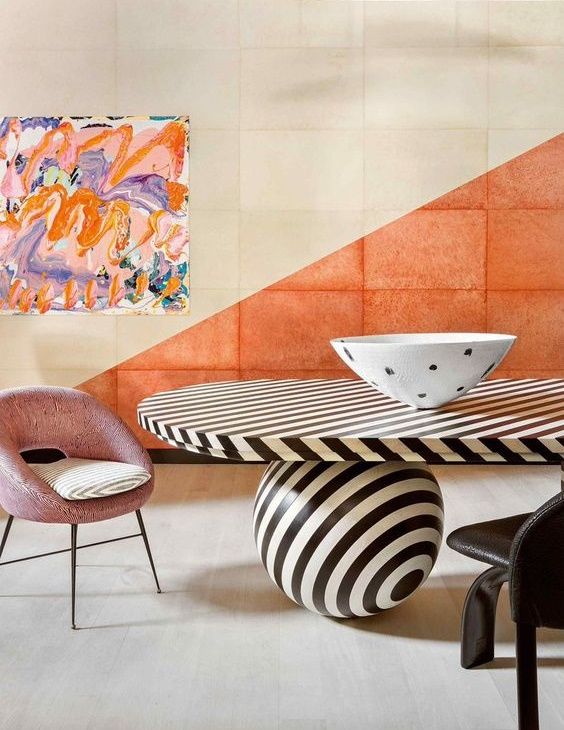







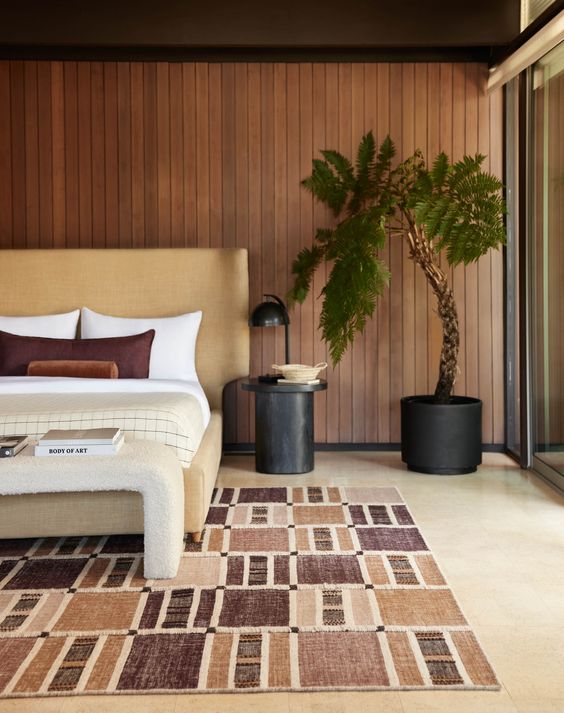





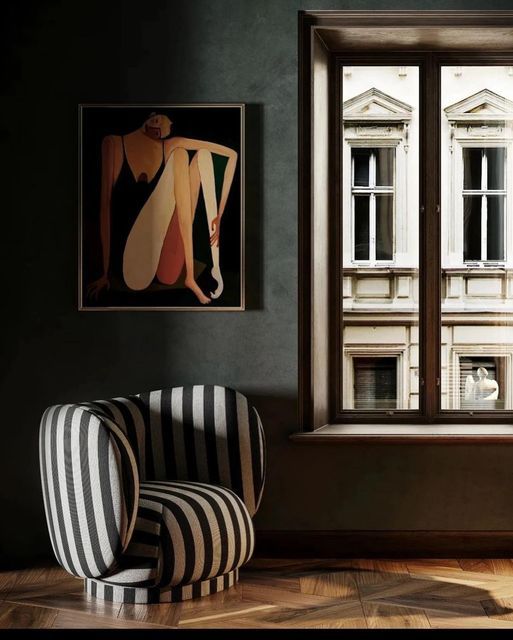

































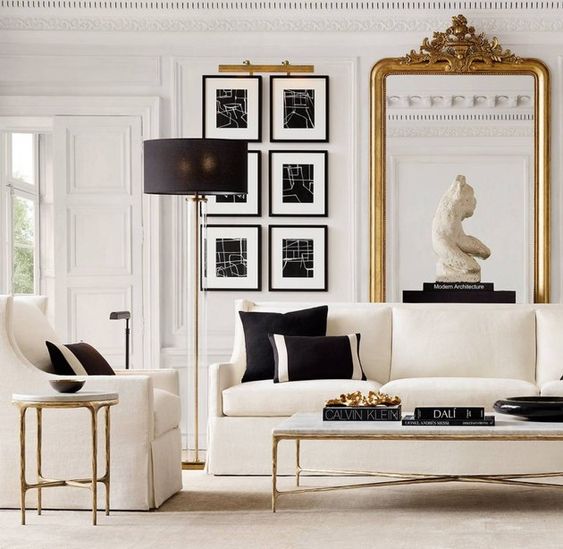











































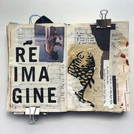





















































Comments